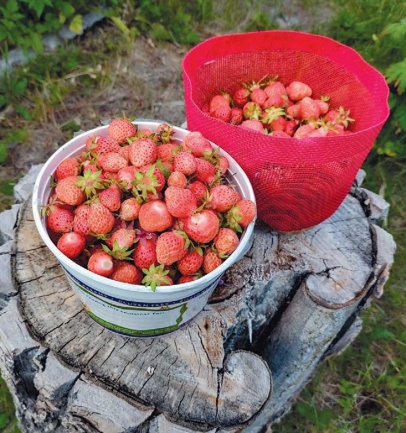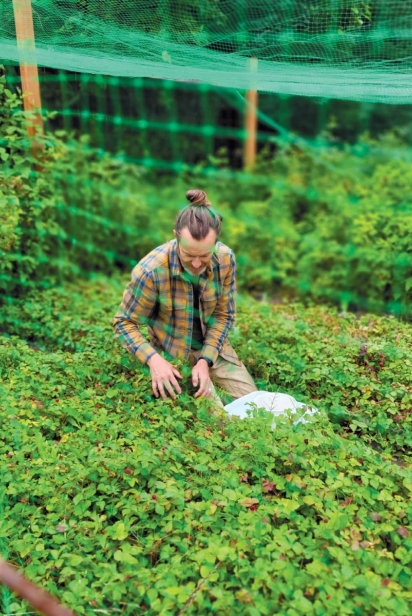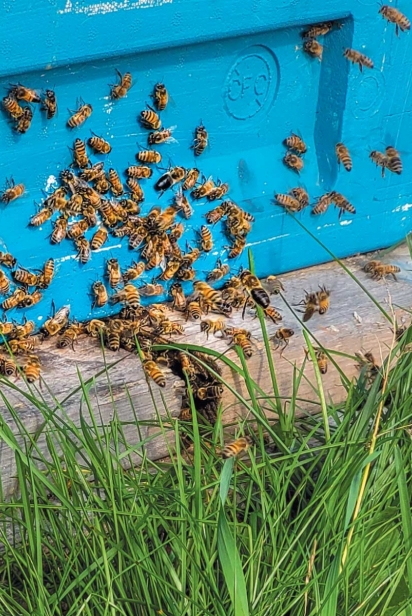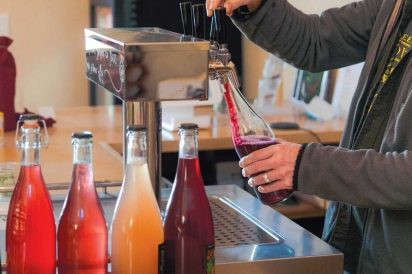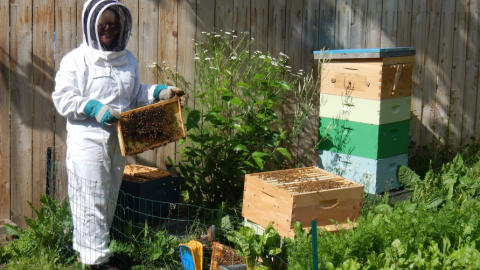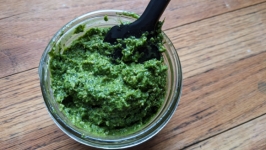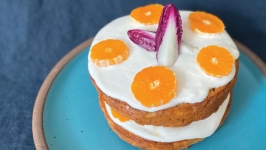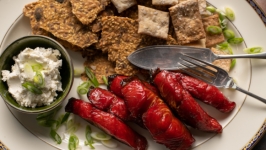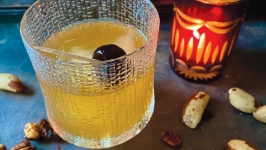Mead, Country Wine, and Shrub
In May this year, the chest freezer in our garage stopped working and we had to think fast about what to do with all of last year’s berries before they spoiled.
The Sitka strawberries that were beginning to thaw had been gathered on late July evenings in the back garden to the sound of golden-crowned sparrows calling across the meadow. The wild blueberries were collected in late August on a weekend getaway to Hope with friends. The gooseberries were meant to be made into the annual pie I make each year in honor of my dad who always made a mess out of the kitchen with his gooseberry pie making. He always had a way of making us believe we were eating the most delicious food in the world, even if our taste buds knew better.
That’s one thing with homegrown and foraged berries. They always come with a story, which makes them valuable. Tossing them into the compost pile would have been an insult to all the work and fun that went into gathering them, all the hours spent filling buckets, and all the flavor and potential contained in each and every one of those zip-locked bags.
Being that it was May though, it was time to put the garden in, harvest stinging nettles, and spend some time outside after a long winter. We didn’t want to devote an entire weekend to jam making or pie baking, or even go through the trouble of acquiring another freezer, so we did what people have done through the ages when they have more berries than they know what to do with. We took a stab at making country wine.
According to Pascal Baudar, the author of The Wildcrafting Brewer, country wine is wine made from something other than grapes. He wrote, “The term may have originated from the fact that in pretty much any culture or location, it’s traditional for people living outside cities to make their own wines using what they have in their gardens and orchards, or from foraging the local environment. Winemaking is simply part of securing the harvest, just like other methods of food preservation.”
We found Baudar’s book to be a great resource. Most helpful though were consultations with a local winemaking expert who answered our questions and reassured us that making wine need not be too complicated of a process.
Jason Davis of Sweetgale Meadworks & Cider House in Homer has created a business of making mead—which is just a term for wine made with honey—using nothing but local ingredients. Before he went into business though, he started out making small batches of country wine with raspberries from his yard and honey from his bees. Lucky friends became his taste testers.
Ultimately, it was a gift from one of those taste testing friends that inspired Davis to take his winemaking to the next level. “Only when Ann Dixon, who was then the library director here in Homer, gave me a bunch of her big sweet black currants to make wine with, did I make an all-Alaskan wine that completely knocked my socks off and made me think it might be interesting to start selling 100 percent local wines.”
Davis started out using wild yeast to ferment his wines, but he wanted to make sure that method was giving him the best flavor, so in the early testing days, before he opened his doors, he experimented with both wild and commercially manufactured yeast. “Wild fermentation is the way wine was always made, for thousands of years, until quite recently, and I had seen how easy it was and how well it worked when I did it myself in Malta and Italy, plus I didn’t want to ship in an industrial product to make local wine when it wasn’t actually necessary,” he said.
Ultimately, he determined that the wild yeast brings out the brightest flavors. He likened the taste difference to bread made with a sourdough starter versus bread made with a commercial yeast. By using wild yeast to ferment his honey wines, and then refraining from adding any chemicals to stop the fermentation, Davis is able to keep his wines 100 percent local.
Now keeping up with the demand for Sweetgale’s locally sourced meads is an effort that involves the community. In addition to the honey and nagoonberries that Davis harvests from his on-site garden, he estimates he’s purchased berries, honey, rhubarb, spruce tips, peonies, apples, and wild roses from more than 50 Alaska farmers, foragers, and beekeepers.
By keeping his batches small, Davis is able to try new flavors and change his menu according to what’s available. Last year after a windfall of alpine blueberries, he made a batch that customers consumed as fast as he could make it. In March of 2022 he entered his Alpine Blueberry Mead into the 9th annual Texas Mead Cup in LaGrange, Texas. His entry won both first place in the fruit or berry mead category, and Best in Show out of 92 entries.
There’s nothing competitive about making a country wine, though patience is required as it takes a while for it to ferment and settle. At the time of this writing, which is going on three months since our freezer died, I’ve yet to taste our wine. I’m told not to expect it to be like the table wine we buy at the liquor store, but rather a tasting wine that captures the essence of a wild berry.
Beyond The Wildcrafting Brewer, I’ve found Artisanal Small-Batch Brewing by Amber Shehan to be both helpful and inspiring. It covers all the bases, including safety.
For philosophical and historical information on brewing with wild yeasts, I recommend Sacred and Herbal Healing Beers by Stephen Harrod Buhner.
If you find yourself with more berries than you know what to do with and you would rather take a pass on making alcoholic beverages, another simple and delicious way to preserve a load of berries is to make a simple shrub. Shrub requires only three ingredients: sugar, berries, and raw, unfiltered apple cider vinegar.
To make a shrub, combine berries (or a rhubarb and berry combo) and sugar. Allow the mix to sit in a refrigerator or very cool place for three to four days, stirring it as often as you remember to. Through osmosis, the sugar will pull the juice from the berries and create a syrup. After three to four days have passed, strain and pour the syrup into a jar and add 1 tablespoon of raw apple cider vinegar for every eight ounces of juice.
Unlike wine, a shrub is ready to use in less than a week, although the flavor becomes more vibrant with time. It will keep in a refrigerator or root cellar for at least a year.
I like to add a tablespoon or two of shrub to tea or sparkling water. It’s an excellent addition to sauces, dressings, and cocktails. It’s great for flavoring meats and vegetables. Taken straight, a shot of shrub will soothe a sore throat or relieve a wicked sweet tooth. Black currant is my favorite.
Disclosure: Sweetgale is an advertising partner, but as with any story subject, their choice to advertise or not plays no role in editorial choices around this story.


